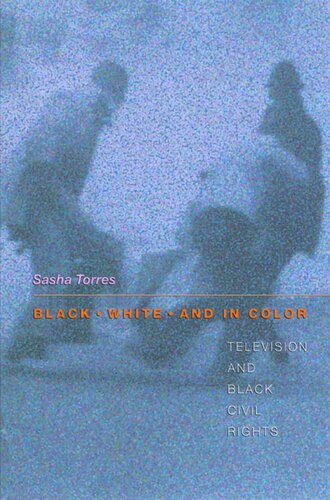

Most ebook files are in PDF format, so you can easily read them using various software such as Foxit Reader or directly on the Google Chrome browser.
Some ebook files are released by publishers in other formats such as .awz, .mobi, .epub, .fb2, etc. You may need to install specific software to read these formats on mobile/PC, such as Calibre.
Please read the tutorial at this link: https://ebookbell.com/faq
We offer FREE conversion to the popular formats you request; however, this may take some time. Therefore, right after payment, please email us, and we will try to provide the service as quickly as possible.
For some exceptional file formats or broken links (if any), please refrain from opening any disputes. Instead, email us first, and we will try to assist within a maximum of 6 hours.
EbookBell Team

4.0
6 reviewsThis book examines the representation of blackness on television at the height of the southern civil rights movement and again in the aftermath of the Reagan-Bush years. In the process, it looks carefully at how television's ideological projects with respect to race have supported or conflicted with the industry's incentive to maximize profits or consolidate power.
Sasha Torres examines the complex relations between the television industry and the civil rights movement as a knot of overlapping interests. She argues that television coverage of the civil rights movement during 1955-1965 encouraged viewers to identify with black protestors and against white police, including such infamous villains as Birmingham's Bull Connor and Selma's Jim Clark. Torres then argues that television of the 1990s encouraged viewers to identify with police against putatively criminal blacks, even in its dramatizations of police brutality.
Torres's pioneering analysis makes distinctive contributions to its fields. It challenges television scholars to consider the historical centrality of race to the constitution of the medium's genres, visual conventions, and industrial structures. And it displaces the analytical focus on stereotypes that has hamstrung assessments of television's depiction of African Americans, concentrating instead on the ways in which African Americans and their political collectives have actively shaped that depiction to advance civil rights causes. This book also challenges African American studies to pay closer and better attention to television's ongoing role in the organization and disorganization of U.S. racial politics.